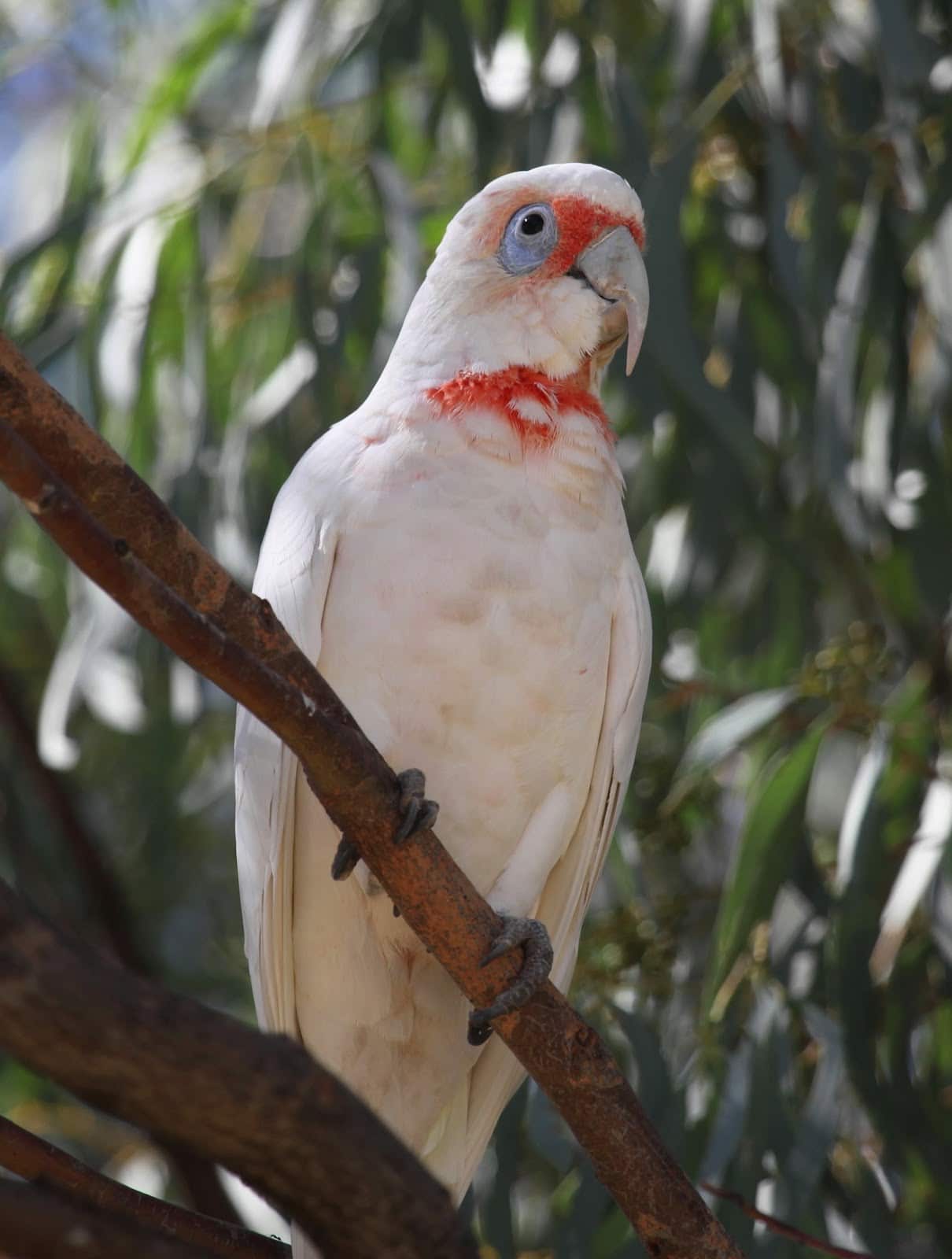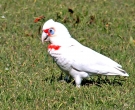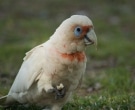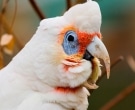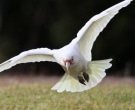Content |
|---|
Description
35 to 41 cm.. length. The weight of 500 to 600 g..
The Long-billed corella (Cacatua tenuirostris) has white plumage. The undertail coverts and the parts below from the wings they are bathed in pale yellow, very visible in flight. It has red coloration in the throat and the chest, with a Red Crescent ranked in the upper breast.
The Head shows a small crest white, Red front and a wide, nude and fleshy eye ring blue-grey around the eyes dark browns. The bill is white with blue base. upper jaw is long and hooked. The legs and feet are dark gray.
The female is similar to the male, with the upper jaw more short and less red.
There are two similar species:
– Cacatua sanguinea. Lack of forecrown Red and the red color in the neck. The upper jaw is shorter.
– Cacatua galerita. Similar in flight, has crest yellow and lacks of colour red. The bill is black.
- Sound of the Long-billed corella.
Habitat:
Video – "Long-billed corella" (Cacatua tenuirostris) |
|---|
Common in forests and remnant trees on farmland. It nests in Eucalyptus camaldulensis in the flooded Plains or close to streams. Wild populations living on farms and parks in urban areas.
Behavior:
It´s resident in their area of distribution, some local movements. Outside of breeding season, You can see in large flocks of up to 2.000 birds or more. Son noisy and visible, pronouncing discordant calls.
Pose in large eucalyptus near water. They leave the roost in the morning to drink, and then, go to the feeding areas. Again when the darkness comes to sleep, but not before excited participate in games and stunts .
They move on the floor with stunning movement jump. They do not have the other species waddling gait cockatoo.
It causes damage to crops of cereals and tree fruit, considered as one pest for farmers.
Nest colonies. They can create their nests with other species of Corella, and sometimes they hybridize. Populations feral in Sydney and Perth, from the release of unwanted birds, they may hybridize with endangered species such as the Cacatua pastinator
Reproduction:
Held from July to November. Forman couples monogamous. The male and female prepared the nest in the Hollows of large old eucalypts. If you do not find a suitable tree, You can make a burrow in soft soil Bank. They fill the nest of wood chips and often reuse it for several years.
They nest in large colonies, with several nests in the same tree.
The female lays 2-4 eggs White. The incubation lasts a few 24 days, shared by both parents. The young leave the nest 55 days after hatching, being fed by the parents for three weeks more.
Food:
Feeds mainly on what obtained from soil, seeds, estate and bulbs that unearths with its upper jaw. They feed in the coolest hours of the day. Also consumes insects.
Distribution:
Size of the area of distribution (reproduction / resident): 382.000 km2
Is located in the southeast of Australia. Introduced in urban centers of Australia and Tasmania.
Conservation:
State of conservation ⓘ |
||
|---|---|---|
 Minor Concern ⓘ
(UICN)ⓘ
Minor Concern ⓘ
(UICN)ⓘ
| ||
• Current IUCN Red List category: Least concern.
• Population trend growing
Populations may be declining due to loss of breeding grounds in its original distribution area.
But, the Long-billed corella It common in its range.
Is created that in the world there are more than 250 thousand individuals.
"Long-billed corella" in captivity:
It is very popular as a pet for the most part of Australia, and he has catalogued as the best “talkative” of the australian cockatoos for its ability to mimic words almost to perfection.
Has a personality playful and active.
Out of its area of distribution is rare in poultry farming.
Alternative names:
– Long billed Corella, Long-billed Cockatoo, Long-billed Corella, Slender-billed Corella (ingles).
– Cacatoès nasique (French).
– Nasenkakadu (German).
– Cacatua-corella-de-bico-longo (Portuguese).
– Cacatúa de Pico Largo, Cacatúa Picofina (español).
scientific classification:
– Order: Psittaciformes
– Family: Cacatuidae
– Genus: Cockatoo
– Scientific name: Cacatua tenuirostris
– Citation: (Kuhl, 1820)
– Protonimo: Psittacus tenuirostris
–
Images Slender-billed Cockatoo:
Sources:
– Avibase
– Photos: Alice Springs in Australia’s Red Centre, commons.wikimedia.org, Ian Barker (ibc.lynxeds.com/)
– Sounds: Marc Anderson (Xeno-canto)
